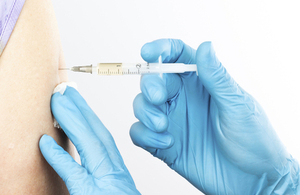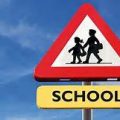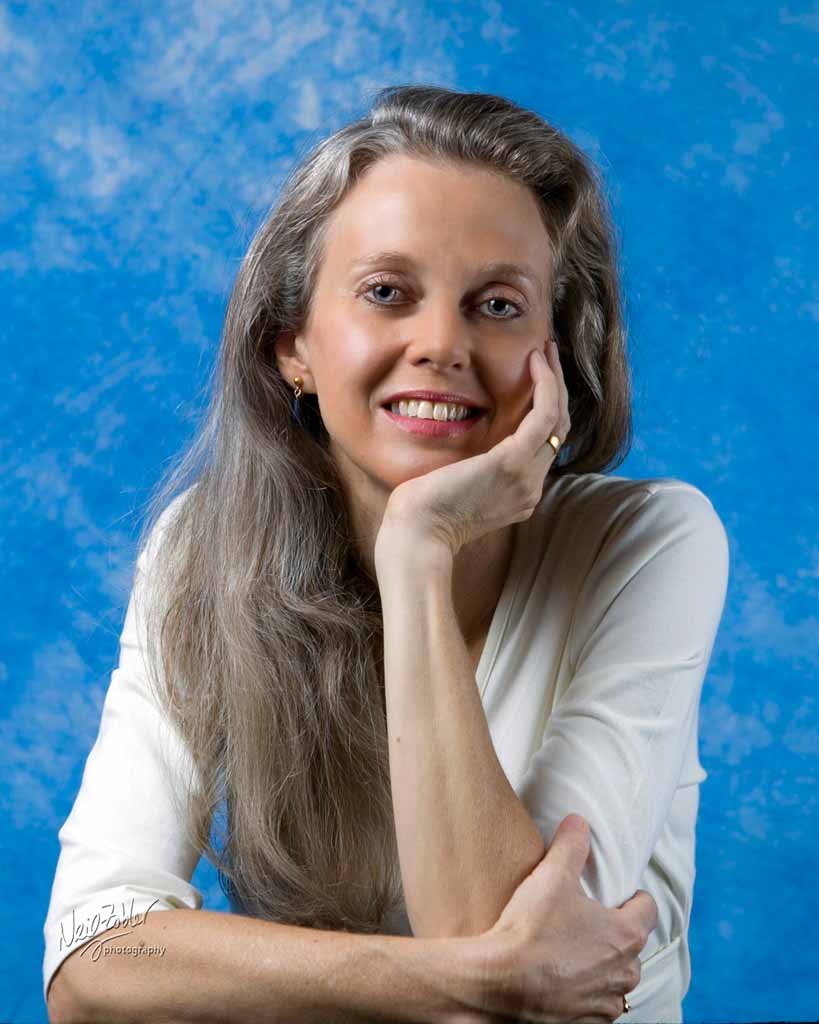
For the Kids
So they want all the schools to be open again. In 100 days. Or sooner. Get those kids back in school! Get them back. Virtual learning is a disaster, for them, for their parents and for society at large.
Well, in my district we are back in school. We have been back in school since August. The parents who want to send their kids to school do so and the parents who want to keep their kids home do that. But don’t imagine that the children who come to school are getting a better deal. They are getting more human contact, for sure. They are getting the value of routine and additional teacher supervision, but please don’t imagine that they are doing fun projects or hands-on science experiments. Don’t imagine that they are running around a gym or playing a musical instrument or drawing a picture. In an effort to ensure “equality of education,” our district has mandated that the children who physically come to school, like their classmates at home, do all of their learning in front of a computer.
No one likes this. Everyone understands that children need less time hunched over a screen and more time doing things with one another, collaborative projects, learning games or just playing on a jungle gym together. No one thinks that virtual learning is giving the children what they need.
Virtual learning is not giving the teachers what they need either. It is giving us headaches, backaches and a lot of other aches we try not to think about. It’s ruining our sleep, our weekends and our relationships. Rest assured, we’d like it to be over as soon as possible.
So why are teachers skeptical about returning to full in-person instruction? Why are we whining about wanting vaccines first?
The CDC has said that schools can open safely if we are all masked, wash our hands a lot, keep the schools clean and well-ventilated and stay socially-distanced from one another. Okay. It’s no problem to mask or to wash or sanitize our hands. We all do that. We do it obsessively a hundred times a day. The school I work in, I have to say, is also extremely clean. Our custodians are heroes and the district, to its credit, hired additional cleaning staff at the beginning of the school year. Our custodians are constantly moving through the school spraying and wiping surfaces. Some of them have gotten sick, very sick, but as soon as they were clear they were back at it, waging war against the germs.
As far as ventilation goes, things aren’t as positive. I work in an old un-air-conditioned building where the ventilation has always been poor. When the temperature is high, it can be in the 90’s on the top floor under the roof. When the temperature is cold, the windows are closed and the heat is on, it is often unbearably stuffy. At the moment, the air is better because we have less than half of our students physically in school, but if the classes were full again? Twenty to twenty-five children plus a teacher in a small room? Would you be comfortable sending your child into school?
Having said that, air quality isn’t our main concern. Our main concern is social distancing. The fact is that, despite everyone’s best intentions, or what the CDC might recommend, rigorous social distancing in elementary school is impossible. In Pre-K, Kindergarten and First, no matter how far you might be able to space the children’s desks, or keep them from using or touching one another’s things, they still need help with their computers, their papers or just putting on their hats and coats. You are constantly getting close to them, touching their things, breathing on them and having them breathe on you. As the children get older, you no longer have to help them get dressed, but you still have to provide tech support. This doesn’t work very well standing six feet away when you can’t see what the problem is.
So the teachers know from experience that social distancing for us is already imperfect. It is imperfect with less than half of our student body present. The reason we have less than half of our student body present has nothing to do with our school district and everything to do with our parents, large numbers of whom have elected to keep their children home.
Why have they done this?
Well, we are an inner-city school and most of our families are people of color. There have been a lot of articles written lately about families of color not trusting the school systems to keep their children safe. I don’t think it’s a question of trusting the school systems. I think it’s a question of having no illusions about what can happen to you. Many of our families live difficult lives. In the present pandemic, they know people who have gotten sick or died of Covid-19. Several parents of my children have had it themselves. So they prefer not to chance the lives of their children with official assurances.
“We should send them all thank you cards,” one teacher said to me the other day, “thank the parents for making the possibility that the teachers will get sick just a little less likely.”
What we know in our bones as teachers, however, is that if all the parents suddenly changed their minds tomorrow and decided to return their children to in-person instruction, our district would turn no child away. They would tell us to do the best we could to distance, to make it better, but when that wasn’t possible, we would just have to make do. Children would sit inches away from one another in stuffy, poorly-ventilated rooms. Teachers would sit inches away from the children.
“It’s all right,” people say. “Little children don’t often get Covid and if they do get it, it’s not severe.”
(Except when it is severe and they die of it.)
“But what if I get it?” I ask. “What if I get it from a germy little kid without symptoms? What if I get it badly?”
I have been lucky so far, no Covid, a few scares, nothing serious. As the months pass, however, and I report to school day after day, I ask myself if in the end I will be able to dodge the Covid bullet? Remember that book we all read in high school, All Quiet on the Western Front? Remember how the hero of that book, a young German soldier, manages to evade death for all four years of the First World War, only to get shot and killed on the day they were signing the armistice? I think about that soldier. I think about that kind of bad luck.
So what do I do to protect myself? What I can. I double mask. I wash my hands. I try not to get close to the kids unless I have to, but right now I am administering the annual English tests and each child I test in person needs me to show them how to log in. Each Kindergartener or first grader needs help recording their answers, advancing to the next page, or not accidentally exiting themselves from the test. None of this can be done from a safe social distance. Who thought it was a good idea to administer tests like this in the middle of a pandemic? The same folks who think Connecticut teachers can wait for their vaccinations.
“There’s no such thing as no risk,” people say to us. “Think of all the other essential workers who have to report. Think of all those kids stuck at home not learning properly. You teachers are being selfish. Pull yourselves together. Do it for them. Do it for the kids.”
There has always been a strong element of moral blackmail built into the teaching profession. Administrators and school boards use it on their teachers. Teachers use it on one another and on themselves. We always feel guilty. We always feel like we could do more. We are always joining one more committee, agreeing to administer one more fund-raiser or stepping up to organize yet another school trip. That’s in addition to what we normally do which is already too much.
I would like to return to a normal school day where I could bring groups of children to my room and do project-based learning, where we could sing songs together and not worry about how many potentially infected droplets were spewing out into the air. But if little kids aren’t likely to get Covid, I can’t afford to be so blasé. I am not vaccinated. Connecticut has made the decision not to vaccinate teachers yet. I begrudge no one a shot. No one. Not the health care workers, or the older folks or the ones with pre-existing conditions, but of course I would like a shot, too. I would like it before the classrooms are full again. I would like it sooner rather than later.
I think it would be fair to demand teachers return to full in-person school if they were vaccinated. Every teacher I know thinks the same. You want everyone back? Twenty-five to a room without social distancing? Then vaccinate us. Just vaccinate us. And then we’ll go in and do it for the kids.





This is powerful. I am forwarding the link to my son who teaches fourth grade.
This is so sad, Linda. Have you sent this essay to Ed Lamont and anyyone else you can think of in CT?? They should read this. They need to know the risks you take! Meanwhile, I pray that you stay safe and Covid-free !
As I received your comment, I was sitting in the Danbury community center after getting my first COVID-19 vaccine shot! They had some extra ones left over at the end of the day. So I now have a little protection. Next shot March 25!
After all this is over, the process will be studied. People will be able to discern the pros and cons of treating/controlling this horrible virus. Perhaps they’ll come up with new strategies to put in place for the next time. But now we have heros that sacrifice themselves , trying to promote a type of normalcy for our young, keeping them abreast of their education, helping their parents deal with their unsettled lives.
Our teachers are damned if they do or if they don’t. Easy to stand back and spout disparities. Im so glad that Linda was able to get her shot. Hopefully it will be available all teachers soon.
Nice to know they’ll allow the teachers to scavenge the crumbs……..